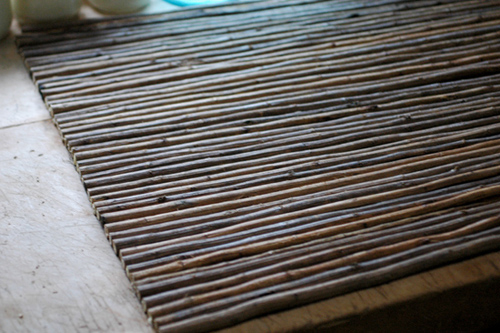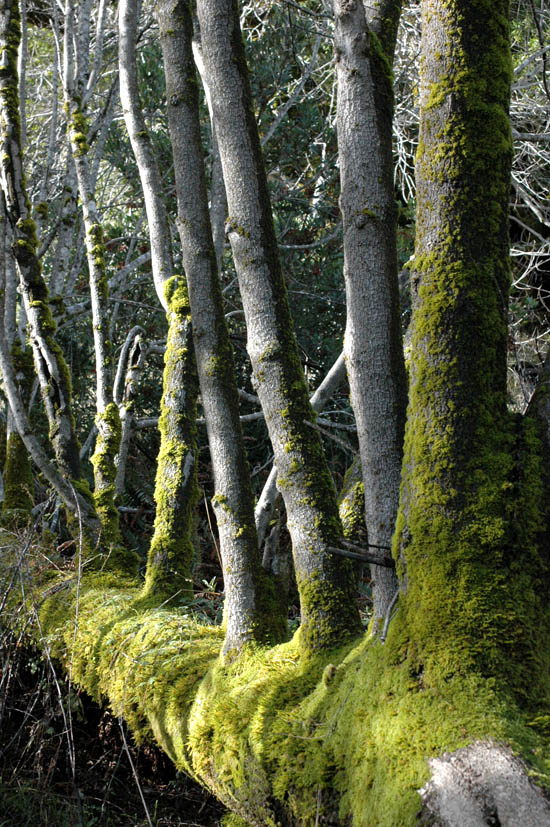For many years, Tamara Wilder and I would teach leg rolling at our classes and at various primitive skills events. We were real excited about it and started to see the usual hand twisting taught by most books and instructors at the time, as sort of grade school level cordage making. Leg rolling was slow to catch on for some reason, but it now seems to be more common, as it should be. This short post is about leg rolling as compared to some other methods, and why is it worth learning, even if you don’t use it all the time.
For making cordage without any props or gizmos, leg rolling is the worldwide norm. It may have been slow to catch on in the primitive skills scene, but it seems almost universal among traditional cultures. Leg rolling is common because it’s fast. The cord is rolled on the thigh or calf with the flat palm, usually in an up and then down motion. With a little set up, a push down the thigh with the flat hand, and a pull back up the thigh, you’ll usually have 5 to 6 inches of cordage or so.
Almost everyone who already makes cordage is familiar with the hand twisting method, often called reverse wrapping, where the twists in a cord are made one at a time. Reverse wrapping is useful at times, good to know, and a good way to learn about cordage, but it is pretty slow going! We also use a method I came up with which we call mouth twisting (or I think that’s what we call it. It's kind of a dumb name). Mouth twisting is a little faster than reverse wrapping, but it is not as fast at leg rolling, and it can make you cross eyed, looking down at the cordage right in front of your nose, so it’s not very pleasant work, though I still use it quite a bit for certain applications.
Speed may not be that important to someone just dabbling a little in paleo arts, but when some of us started to do larger projects, like nets, belts and ropes, reverse wrapping was just not cutting it. Imagine making a hammock, that might contain a 1/4 mile or whatever ridiculously long length of cordage, by twisting each and every twist one at a time for, what? a year? two years? No thanks. Leg rolling is the next level, and takes cordage from hand cramping novelty status up to a level where it can have a place in a subsistence paradigm.
Tightness of twist: Many years ago, I made a batch of slings, the kind for throwing rocks, with buckskin pouches and dogbane cords. Having a disease somewhat approaching perfectionism at the time, I wanted to make those strings super duper nice and tight! I used the mouth twisting method, which can be used to make very tightly twisted cord. I figured that if the cords where under great stress and possibly some twisting and untwisting action while the sling was in use, I’d better make them really "good". I was used to making necklace cords this way and they lasted a long time. So I made them SOOOO NICE! The were thick, immaculately spliced with no tag ends and the fiber added very gradually so there were no weak spots. And boy were those suckers tight. They were perfect(ish), looked great and the strings broke when they were used. I was like wahhhh!?!?!??? The strings were so tight it turned out, that the fibers were not able to move freely and were basically cutting each other when under stress. I had another sling which I'd made with much thinner looser dogbane cord and a coyote scalp pouch, which never did break in spite of considerable use.
Occasionally it’s nice to have a very tight cord. You can make strings tight by reverse wrapping, or mouth rolling, but not so much with leg rolling. I used to think that the looser cord produced was a major drawback to leg rolled cordage, but now I see it differently. Unless the cord is extremely loose to the point where it may actually pull apart, or so loose that it’s prone to tangling and snagging, there are actually very few uses where you even want really tight cordage. If you do need string that is ever so tight, then it’s usually only in short lengths, so you can afford to use the slower reverse wrap or mouth methods. Overall, a somewhat slack cord is probably a little more utilitarian.
I don’t have time to turn this into a how to novelette on leg rolling, but I was just working on the Paleotechnics cordage book. I made up a new batch of pine soot ink to do book illustrations, of which there will be many in that book. Said book has been in progress, or languishing in a corner of my computer for many years, so no saying when it will actually be finished. It'll be good when it is finished though, promise!
Leg rolling is still best learned in person, though the youtube videos I plan to record eventually will be a close second. Fire, cordage and stone tools, along with knowledge of the plants and materials used to make them, form the foundation of basic technology. If you have a chance to learn leg rolling in person at an event, or from a friend, do it. Once you know how to do something, no one can take that away from you, and this is a skill that has been pandemic to our human family for good reason. Finally, it's one thing to know how to leg roll cordage, but to get really good at leg rolling, the best approach is to undertake a large project that requires 50 feet or more of cordage. Then you'll be rolling out cordage like a spider.
Happy twisting!












